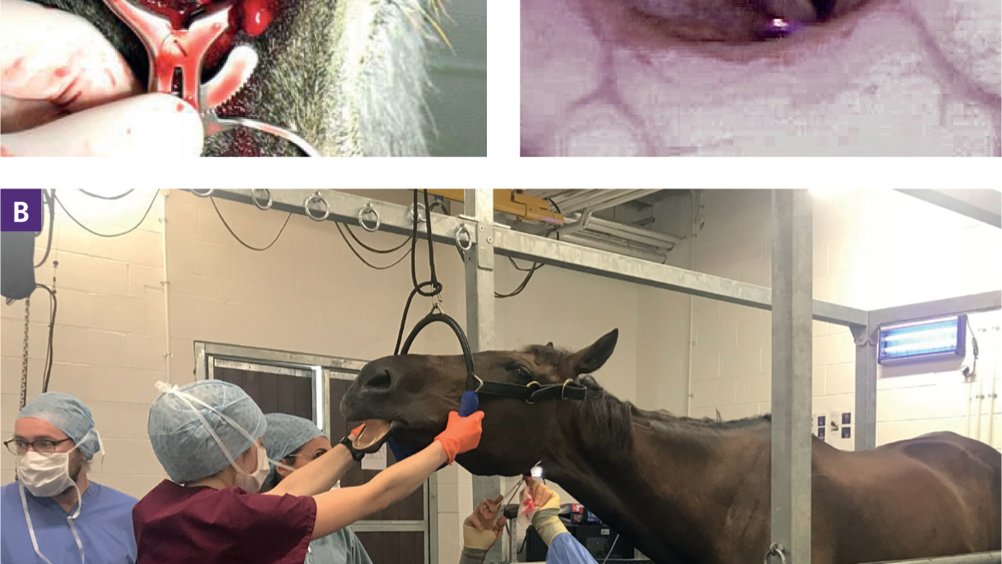References
Standing upper airway surgery: what can be done?

Abstract
Performing a number of different upper respiratory tract surgeries in the standing sedated horse is advantageous because it improves accessibility and the anatomy is in a more appropriate location. Standing surgery avoids the risk of general anaesthesia, affording a significant advantage to the horse and owner. However, this has to be weighed up against the increased risk of performing surgery in the standing sedated horse to the surgeon and the rest of the surgery team. Often, specialist facilities and equipment are required as well as a more in-depth knowledge of the anatomy and the procedure, along with a move advanced skill set. This article describes the procedures of upper airway surgery that lend themselves to being performed in the standing sedated horse.
Performing many different upper respiratory tract surgeries in the standing sedated horse is advantageous. The accessibility to the head is improved, the anatomy is in the appropriate position and the visibility is superior, not to mention the added benefit of avoiding the risks of general anaesthesia. The ability to flex, extend and move the head and neck to the left and right facilitates improved accessibility. While this may be appealing to the surgeon and the owner, it often requires specialist equipment and always requires attention to detail, with meticulous planning and careful dissection with very little room for error. Table 1 outlines the standing sedation protocol that used by the author, which has been found to be most effective.
This article describes a selection of diseases that can be treated with standing upper airway procedures, focusing on those associated with the larynx, pharynx and soft palate.
This occurs when the aryepiglottic membrane envelopes the rostral aspect of the epiglottis (Figure 1). The treatment for this is to transect the membrane to release the entrapped epiglottis; there are a number of ways to do this.
Register now to continue reading
Thank you for visiting UK-VET Equine and reading some of our peer-reviewed content for veterinary professionals. To continue reading this article, please register today.

